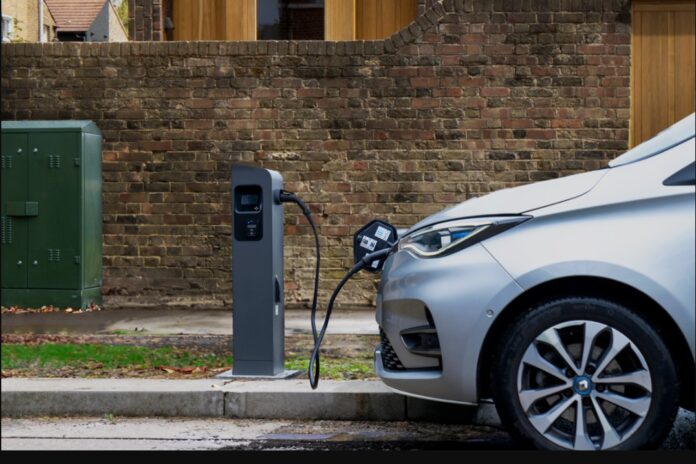The operator’s incubator unit, Etc, is looking at using up to 60,000 street cabinets to power EV charging points
BT has about 60,000 street cabinets and it is exploring whether it can extend their useful life by converting them into charging stations for electric vehicles.
Etc, BT’s incubator unit, is running the trial. If successful, it would help address the shortage of EV charging points nationally.
More than three-quarters (78) of drivers of petrol and diesel vehicles that responded to a recent BT survey said that not easily being able to charge an EV put them off getting one. The UK is not the only one struggling with inadequate Infrastructure: in the US there are only 160,000 public charging points to serve 2.4 million EVs.
According to ZapMap, at the end of December 2023, there were 53,906 public EV charging points across the UK, across 31,056 charging locations. This represents a 45% increase in the total number of charging devices since December 2022.
BT’s plan is to retrofit the cabinets so they can power a number of charging points with renewable energy as well as supporting broadband service without needing a new power connection. Where there is sufficient space and power available, cabinets still supporting copper-based broadband, as well as those that are due to be decommissioned, could come into use as part of the charging infrastructure.
This is known as sweating or monetising your assets and BT has said it is open to ways of financing the EV business, from public funding to private investment and partnerships.
It does not appear to be in a tearing hurry and plans appear subject to change: in July 2023, BT said first charging points would be in Northern Ireland in autumn. Now we are told in fact the first one be in East Lothian, Scotland, shortly. Hmmm.
Slow going for others too
BT is not the only one thinking along these lines. Liberty Global, owner of Virgin Media before it became Virgin Media O2 had the same idea back in 2019. The parent company announced a partnership with Zouk Capital the following year to convert Virgin Media’s street cabinets into charging points in 2020 and the plan was to deploy 1,200 new EV charging sockets by “early 2021”. The first was finally unveiled in April 2021 in the London borough of Waltham Forest.
In 2023, it rebranded the EV business as Believ. The website invites visitors to download a white paper on why EV Britain’s EV infrastructure is stalling, but appears to vet requests to download it. The assumption appears to be you are from a local authority.
BT’s plans
Some clues about possible causes of delay can be deduced from BT’s plans to scope out the following through its trials:
- Technical – cabinet location, power availability, customer accessibility, digital customer experience and engineering considerations
- Civil planning – location, local council engagement, permissions and physical accessibility
- Commercial – public funding options, private investment, partnership, and wider financial modelling to establish a route to commercial benefit for the Group
- Operational – as a dedicated BT Group venture or in partnership with others.
According to Tom Guy, Managing Director, Etc. at BT Group, it is “working closely with local councils in Scotland and more widely across the UK, we are at a critical stage of our journey in tackling a very real customer problem that sits at the heart of our wider purpose to connect for good.”
“This is a key step in our mission to build products and services right now that work for the future, with positive transformation at the heart.”
Joe Thompson is Head of Group Optical & Network Product at TXO, which helps telcos recycle and reuse equipment and assets. He comments, “BT’s pilot programme to adapt telecom street cabinets into EV charging points could be the start of a trend where service providers look to leverage existing or legacy network furniture for EV charging.
“The consensus among technicians is that most street cabinets possess enough power to support EV charging without…significant upgrades, but each cabinet needs to be assessed for charging on a case-by-case basis. You also need access to these fibre cabinets 24/7 and can’t have cars blocking maintenance engineers if something goes wrong.”
He adds, “BT claims that almost 60,000 of its cabinets would be suitable for EV charging points, giving it the scale to make building a business unit dedicated to this service financially feasible.”
And continues, “The industry is…exploring a range of other use cases to do more good with this essential street furniture, such as monitoring environmental metrics like air quality, noise pollution and land moisture, to serving communities as Wi-Fi hotspots or for enterprise peering arrangements.
“These new initiatives could unlock much-needed revenue as providers look to monetise their fibre networks and build stronger relationships with local communities.”
Interesting to see how it goes.



